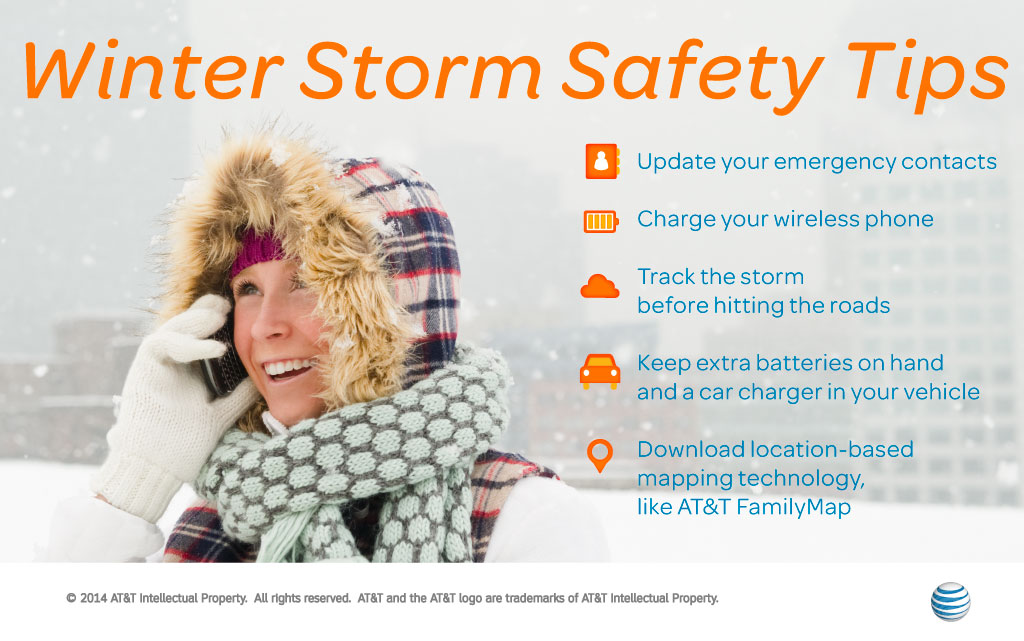Tips to Help Prepare for Winter Weather

With an arsenal of disaster response equipment and personnel on standby as winter storm “Pax” moves in, we are ready to respond quickly.
We have activated our storm preparedness process and are closely monitoring winter storm Pax, which is expected to impact the southeastern United States over the next 24 hours. Among our preparations, we've topped off fuel at generators positioned at cell sites, installed and tested high-capacity back-up batteries at cell sites, installed "Quick Connect Generator Plugs" at many of our cell sites and staged additional emergency response equipment in strategic locations. Our national reliability center is monitoring outages for quick action.
Read more about how we prepared for Winter Storm Pax in the complete news release and check out the below tips on how you can be prepared and protect your device.
Maximizing Service During and After a Storm:
- Try text messaging. During an emergency situation, text messages may go through more quickly than voice calls because they require fewer network resources. All of AT&T's wireless devices are text messaging capable. Depending on your text or data plan, additional charges may apply.
- Be prepared for high call volume. During an emergency, many people are trying to use their phones at the same time. The increased calling volume may create network congestion, leading to "fast busy" signals on your wireless phone or a slow dial tone on your landline phone. If this happens, hang up, wait several seconds and then try the call again. This allows your original call data to clear the network before you try again.
- Keep non-emergency calls to a minimum, and limit your calls to the most important ones. If there is severe weather, chances are many people will be attempting to place calls to loved ones, friends and business associates.
Be Prepared During Winter Storm Pax:
- Keep your wireless phone batteries charged at all times. Have an alternative plan to recharge your battery in case of a power outage, such as using your car charger to charge your device or having extra mobile phone batteries on hand.
- Have a family communication plan in place. Designate someone out of the area as a central contact, and make certain that all family members know who to contact if they get separated. Most importantly, practice your emergency plan in advance.
- Program all of your emergency contact numbers and e-mail addresses into your mobile phone. Numbers should include the police department, fire station and hospital, as well as your family members.
- Track the storm and access weather information on your wireless device. Many homes lose power during severe weather. If you have a wireless device that provides access to the Internet, you can watch weather reports on your phone.**
- Camera phones provide assistance. If you have a camera phone, take, store and send photos — even video clips — of damaged property to your insurance company from your device.
- Take advantage of location-based mapping technology. Services such as AT&T Navigator and AT&T FamilyMap can help you seek evacuation routes or avoid traffic congestion from downed trees or power lines, as well as track a family member’s wireless device in case you get separated.**
Additional information and tips for disaster preparedness can be found at www.att.com/aboutus and www.att.com/vitalconnections.
**Data charges may apply.



